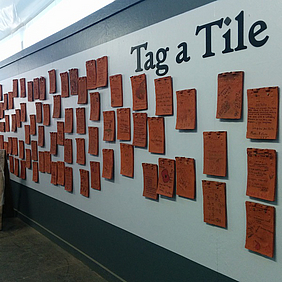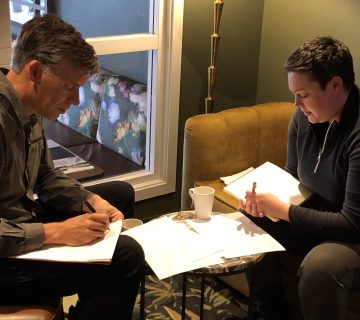The UK Association for Heritage Interpretation announced the results of the AHI 2017 Discover Heritage Awards for excellence in cultural and natural heritage interpretation in Britain and Ireland.
At a dramatic ceremony, held in Inverness in front of an international audience during the joint AHI and Interpret Europe conference on landscapes, award-winning new museum and historic house exhibitions, visitor centres and landscape trails were announced in five different categories.
The quality of all projects made the work of the Judging Panel a difficult one as the finalists represented excellence in a wide range of heritage interpretation from as far apart as St Andrews in Scotland, Dorset in the south of England, Norfolk in the east of England and Connemara in Ireland.
The Seamus Heaney HomePlace in Mid Ulster, Northern Ireland, won the award for new Visitor Centre with the engaging way they tell the story of the Nobel Prize Laureate and the people and places that inspired him. The British Museum in London was awarded best in Interpretation for a Target Audience with their touch tour of the Egyptian Sculpture Gallery for blind and visually impaired people. A project connecting people to John Ruskin and his Victorian museum in Sheffield, northern England, was recognised as best Community Project. The Phoenix-like story of the renovation of the Powerscourt Estate gardens in County Wicklow, Ireland, won the award for best Landscape interpretation.
The National Trust won both the award for their category – Museums and Historic Properties – and also the overall AHI Award for Excellence with their ongoing project called Lifting The Lid at a historic house called The Vyne in Hampshire, southern England, which interprets the renovation of this Tudor mansion’s roof and includes an accessible rooftop walkway.
AHI also honoured two of its long-standing and influential members with Lifetime Achievement Awards. Carl Atkinson was recognised in the year of his retirement from Natural Resources Wales for his work bringing cognitive psychology to interpretation in the 1990s, his instrumental efforts in setting up Dehongli Cymru/ Interpret Wales and the training of many early career interpreters in in interpretive planning. Michael Glen was honoured for his work as a leading interpreter and advocate for professional standards for more than 40 years. In 1975 he was one of the founder members of The Society for the Interpretation of British Heritage – as AHI was originally called – and also of Interpret Europe in 2010.
Congratulations to all our 2017 Discover Heritage Awards winners, runners up and commendations. There were no losers at the Awards ceremony, as every project that made it to the finals has been assessed. The finalists demonstrated their excellence to a large audience of interpreters from across the globe.
The AHI Discover Heritage Awards – this year sponsored by Wessex Archaeology – are the only UK and Irish awards to recognise excellence in all types and sizes of heritage interpretation whether held in museums, historic buildings, visitor centres or any type of outdoor location. Any form of media is suitable, including exhibition, print, digital, art or live. An eligible project can be small or large. Whether it is a new leaflet or a million-pound visitor centre (or anything in between), the awards celebrate projects that best meet their interpretive aims and successfully communicate their key messages to their audiences. All entrants receive feedback and finalists are assessed by a pair of trained judges who are practising heritage interpreters.
The full list of winning, runner up and commended entries can be found on the Awards pages on the AHI website.
For further information about AHI, visit www.ahi.org.uk.
Bill Bevan is Chair for the UK Association for Heritage Interpretation. He can be contacted at: bill.bevan@ahi.org.uk
This article has been edited from an AHI Press Release (Marie Banks, IE News Coordinator).
To cite this article:
Bevan, Bill (2017) ‘AHI Discover Heritage Awards – And the winner is…’. In Interpret Europe Newsletter 4-2017, 19-20.




